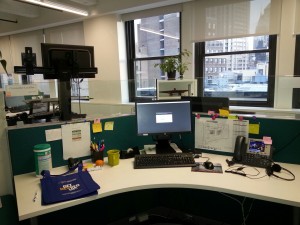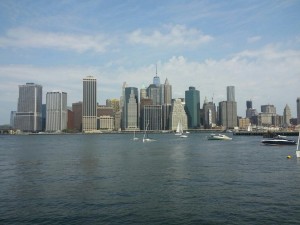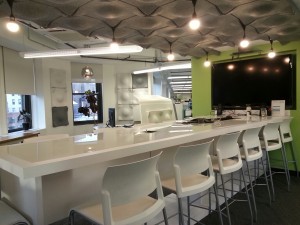A lot has happened since my last post in July. My internship at NYSERDA ended in August when I a took a job as the Project Coordinator for the Multifamily team, also at NYSERDA. This change coincided with more responsibilities but also a continuation of the research and development I was doing on the retrofit design competition, which has gained a lot of enthusiasm from stakeholders and was even mentioned in Governor Cuomo’s 2016 Built to Lead Agenda policy book (p.83-84). I am now writing my Master’s thesis on the design competition.
Expanded Responsibilities

I was very excited to become the Multifamily team’s Project Coordinator in late August. I enjoyed the work and wanted to be more involved in NYSERDA’s programs, so this was the perfect opportunity for me.
My new responsibilities have included being the first line of contact to the program for anyone calling in with questions about the incentive program, helping run budget reports, and managing a pilot project. Since our program was being redesigned for 2016, a number of building owners and developers had questions about the new program and our approach to incentivizing energy efficiency.
I helped out at the Multifamily Performance Program’s Partner Summit in Tarrytown, NY and I was also attended the 2015 Association for Energy Affordability (AEA) Conference in Brooklyn. At these events, I was able to network and learn from energy professionals from across the state at the Partner Summit, and all across the country at the AEA Conference.
Thesis
Since I am continuing to work at NYSERDA through graduation in May, I decided it would make sense to write my thesis on the work I am doing for the deep energy retrofit competition. My thesis focuses on state policies that promote innovation, particularly in building efficiency. I will be doing a comparative analysis of the Netherland’s net zero buildings competition and Brussel’s Exemplary Buildings initiative to see how a similar program could be adopted in New York.
Here’s a brief explanation of the basic idea behind the initiative:

Many deep energy retrofits have been done in New York State and across the world, proving that it is technically feasible to achieve net zero and passive house standards or otherwise large energy savings in buildings. However, these retrofits are largely customized and expensive projects that are often heavily subsidized due to their high price. The idea of the design competition is this: have the private sector compete to design deep energy retrofit packages that are cost-effective and replicable.
The overall idea is to scale deep energy retrofits by leveraging a high demand from the affordable housing sector. If there is a high enough demand for the resulting retrofit packages, costs should come down as the same solution is applied to multiple buildings. This competition essentially seeks to transform deep retrofits from customized projects to an industrialized product, which will hopefully help the solutions to reach a larger scale, even without government subsidies.
Lessons Learned

During my time at NYSERDA, I’ve learned a lot about program design and implementation within a state energy organization. Perhaps the biggest lesson I’ve learned is the importance of a collaborative and interdisciplinary approach to policy.
Energy and a safe and healthy environment are two resources that no one can do without. Therefore, everyone is a stakeholder in energy policy. When we discuss programs at NYSERDA, we work with stakeholders from the public and private sectors as well as a number of non-profit organizations. Some come to discuss issues of cost and affordability, others want to discuss the health and safety of indoor environments, and some are interested in discussing the health and safety of our planet.
The programs designed at NYSERDA involve thoughtful input from all of these voices. Working with tenants, building owners, housing organizations, non-profits, and others in the multifamily sector requires an interdisciplinary approach to program design and implementation – something I’ve experienced at Bard through my coursework in policy, economics, science, and communications.
I’m glad that I have been able to apply the lessons learned from my experiences at Bard to my job at NYSERDA and that my work will in turn inform my thesis. It’s great to use my academic work in practice and I look forward to seeing the outcomes from my research.

